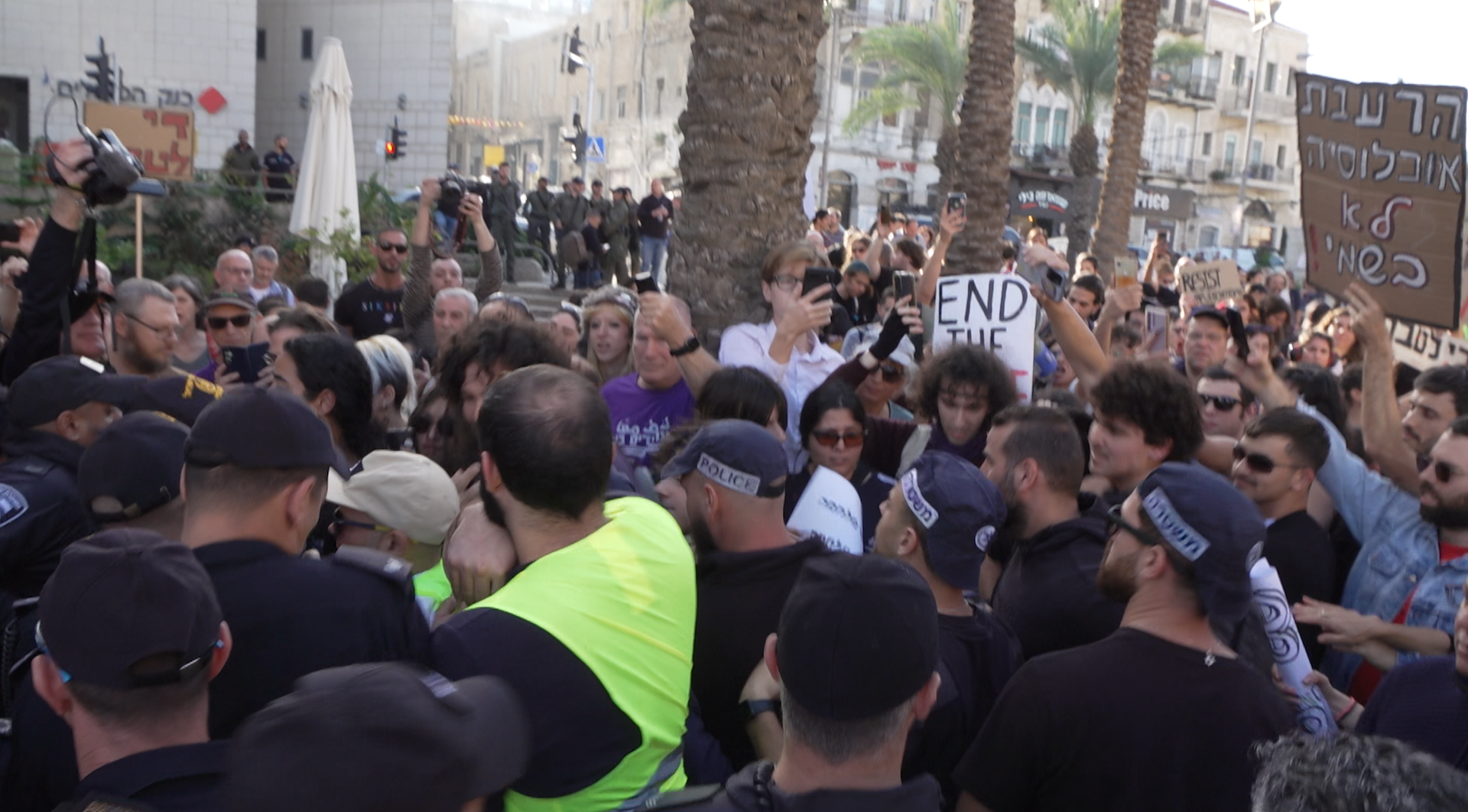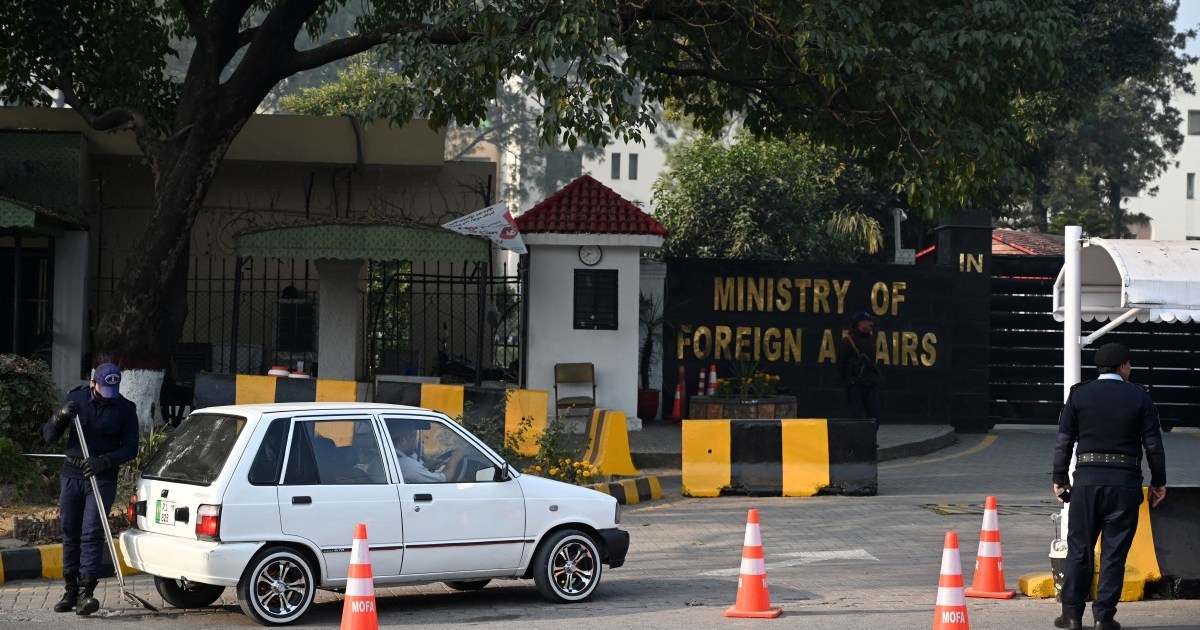
It’s a clear, sunny Saturday morning as our crew prepares the car to drive from Jerusalem to Haifa to cover an anti-war rally. Spirits are high as I stow my camera equipment in the trunk of the car. Then we discuss footwear.
Stefanie, our correspondent, chose to wear comfortable white sneakers because she believes the likelihood of violence is low. However, Luke, who we hired as a security guard, and I decided to wear sturdy shoes in case things got heated.
This is the first anti-war protest in Israel since the war on Gaza began following the October 7 Hamas attacks.
Since then, it has not been easy for the anti-war voice to be heard. The organizers of this rally, Hadash, a left-wing socialist party that supports a two-state solution, were initially banned from the gathering and had to submit their petition to the Supreme Court.
Even finding the location of the protest is proving difficult for us. As we approach the square in Haifa, our GPS begins to move us in circles. Finally we park at a mosque where a local explains that the Israeli army has jammed the GPS signal in northern Israel for security reasons.
Authorities were likely keen to have the protest take place on a Saturday when there is no public transportation, which would make it more difficult for people to reach the square.
On the way to the square we pass a large contingent of police officers in blue uniforms and what appear to be border guards in dark green. They appear to be having a last-minute pep talk before the protest.
No doubt they have concerns about what might happen. They are armed with rifles and pistols and have utility vehicles, the infamous “skunk water wagon,” and officers on horseback.
I’m starting to feel validated by my shoe choice.
![Demonstrators gather for the first anti-war protest in Israel since October 7th [Alasdair Brenard/Al Jazeera]](https://www.aljazeera.com/wp-content/uploads/2024/01/Alasdair-Brenard-protest-Haifa-Jan-20-_-3-1705871262.png?w=770&resize=770%2C431)
Around midday we wait for the rally to start. Police formed a steel ring around the area, erected metal barricades and blocked the nearby road with trucks. They have also stationed an armed scout on a roof overlooking the square.
A local photographer tells me that the police are not happy that the protests are taking place and that the anti-war message is not ready to be heard.
“They will provoke the demonstrators to violence to prove that it should not have continued,” he warns me solemnly.
Our guard is now awake. We begin questioning the arriving protesters for signs of unrest or possible counter-protesters that may have been deployed to incite confrontations.
Luke spots a man reaching into the inside pocket of his jacket in a very suspicious manner. The man looks around and pulls out… a pack of cigarettes. False alarm, but you can’t be too careful.
More and more people come – about 500, many of them young – and some don’t wear shoes. I feel like the police may have overestimated the danger posed by this particular group of protesters.
They beat drums, shout slogans over loudspeakers and give speeches about the importance of reconciliation and how war cannot bring lasting security.
![Demonstrators gather for the first anti-war protest in Israel since October 7th [Alasdair Brenard/Al Jazeera]](https://www.aljazeera.com/wp-content/uploads/2024/01/Alasdair-Brenard-protest-Haifa-Jan-20-1705871339.png?w=770&resize=770%2C427)
It is refreshing to hear an alternative message in Israel and to see Israelis and Palestinian-Israelis standing together in the hope of a peaceful future.
One of the speakers, Maoz Inon, whose parents were killed by Hamas militants in the October 7 attacks, spoke of forgiveness: “My father farmed the land. He grew wheat and raised me to believe in a good future.
“My message to the world is not to choose a side, neither for Israel nor for Palestine, but please for humanity.”
Meanwhile, the police are becoming more and more nervous. They charge into the crowd, dragging a man out and then leading him to a nearby vehicle as protesters, police and press push back and forth in the confusion.
Fortunately, the situation does not escalate and things soon calm down.
But there are other events. At one point, while I’m filming Stefanie talking to the camera, a Palestinian-Israeli man and his teenage daughter approach us. He apologizes for interrupting us before telling us that he was pushed in the back by a police officer while watching the rally. He’s angry and frustrated and feels like he’s being targeted for simply showing up at the rally.
Towards the end of the protest, the police take another step. This time the source of their anger is a papier-mâché fighter plane with cardboard bombs dangling underneath. There is a short fight before the model airplane is snatched away.
Despite the plane accident, demonstrators remain optimistic.
When the rally ends and people start running away in different directions, Stefanie stays a little longer to talk to Maoz. Meanwhile, a counter-demonstrator films him and then tries to start a fight with the remaining people.
At the moment, those protesting here today are in the minority. According to recent polls, the majority of Israelis still support the war in Gaza.






Recent Comments